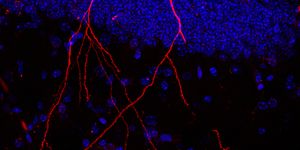Beneficial Bacteria May Help Fight Ear Infections Caused by Bacterial Pathogens
Researchers have identified a bacterial combination that has the potential to fight infections that affect the middle ear and can cause chronic disease. These infections sometimes lead to hearing loss or deafness in children in Indigenous communities. Scientists have now learned more about these preventable illnesses and the species of bacteria that can promote or protect against infection. The findings have been reported in Microbiology Spectrum.
In this study, the researchers obtained nasal swabs from 101 volunteers who were at high risk for these infections. With metagenomic tools, the researchers performed genetic sequencing to identify the microbes that were present in the samples. Then, those results were compared to the medical histories of the patients. Only 17 of the children had never had a middle ear infection. Most of the volunteers had experienced an infection at one point but their tympanic membrane was normal, while a small number had active infections or a perforated tympanic membrane.
The work revealed significant differences in the microbial communities in the samples that were linked to the volunteers' health conditions. Ornithobacterium was associated with infection, while the study suggested that Helcococcus and Dichelobacter warrant further study as potential pathogens. Corynebacterium and Dolosigranulum were linked to ear health and a stable microbiome. Together, they could inhibit the growth of S. pneumoniae, but neither could alone.
"It was clear that these two groups of bacteria needed to not only be present, but to be interacting with each other, to provide protection from middle ear infections," said senior study author Dr. Seweryn Bialasiewicz of the University of Queensland.
This work has solved a long-standing question about why some kids can be at high risk for chronic ear infections but never get one, added Bialasiewicz.
Now that the researchers know that some bacteria have a protective effect, they can use this information to create preventive strategies. Bialasiewicz said that the researchers are hoping that once the mechanism of protection is identified, it can be mimicked in some was as a therapy.
"This could take the form of a molecule that can be used as a drug for treatment, or as a protective probiotic so that these 'good' bacteria can be seeded in the nose early enough to offer protection against the incoming 'bad' bacteria," he said.
Since chronic middle ear infections are such a huge problem in many disadvantaged communities around the world, this research could change outcomes for many children and improve their quality of life. "Our discovery could be applied across the world, helping improve health and reducing the disadvantage gap for a wide range of people," suggested Bialasiewicz.
The scientists were grateful to receive support from these communities and the health teams that assist them.









